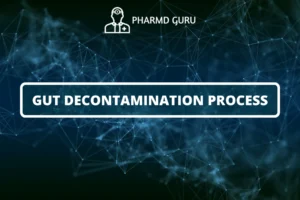PESTICIDE POISONING: Pesticides play a crucial role in agriculture and public health by controlling pests and diseases. However, exposure to pesticides, either intentionally or accidentally, can lead to poisoning and pose significant health risks.
SCROLL DOWN TO THE BOTTOM OF THE PAGE FOR ACTUAL NOTES
TABLE OF CONTENTS:
- Introduction
- Organophosphorus Compounds
- 2.1. Toxicity and Mechanism of Action
- 2.2. Clinical Presentation and Management
- Carbamates
- 3.1. Toxicity and Mechanism of Action
- 3.2. Clinical Presentation and Management
- Organochlorines
- 4.1. Toxicity and Mechanism of Action
- 4.2. Clinical Presentation and Management
- Pyrethroids
- 5.1. Toxicity and Mechanism of Action
- 5.2. Clinical Presentation and Management
Introduction
Pesticides play a crucial role in agriculture and public health by controlling pests and diseases. However, exposure to pesticides, either intentionally or accidentally, can lead to poisoning and pose significant health risks. This article focuses on the toxicity, mechanisms of action, clinical presentations, and management of pesticide poisoning caused by organophosphorus compounds, carbamates, organochlorines, and pyrethroids.
2. Organophosphorus Compounds
Organophosphorus compounds are widely used as insecticides, herbicides, and nerve agents. They inhibit the activity of acetylcholinesterase, an enzyme involved in the breakdown of the neurotransmitter acetylcholine. This results in excessive acetylcholine accumulation, leading to overstimulation of the cholinergic receptors.
2.1. Toxicity and Mechanism of Action
Organophosphorus compounds can be highly toxic and rapidly absorbed through various routes, including ingestion, inhalation, and dermal contact. They exert their toxic effects by inhibiting acetylcholinesterase, causing excessive cholinergic stimulation. Symptoms of organophosphorus poisoning include excessive sweating, salivation, miosis (constriction of the pupils), bronchoconstriction, nausea, vomiting, diarrhea, muscle fasciculations, seizures, and respiratory distress.
2.2. Clinical Presentation and Management
Early recognition and prompt management are crucial in cases of organophosphorus poisoning. Treatment involves decontamination (removal of the pesticide from the body), supportive care, and administration of specific antidotes such as atropine and pralidoxime. Atropine counteracts excessive cholinergic stimulation, while pralidoxime reactivates inhibited acetylcholinesterase.
3. Carbamates
Carbamates are another class of insecticides commonly used in agriculture and household pest control. They also inhibit acetylcholinesterase but have a shorter duration of action compared to organophosphorus compounds.
3.1. Toxicity and Mechanism of Action
Carbamates are moderately toxic and can be absorbed through ingestion, inhalation, or dermal contact. Similar to organophosphorus compounds, they inhibit acetylcholinesterase, leading to cholinergic overstimulation. Symptoms of carbamate poisoning include excessive sweating, salivation, miosis, gastrointestinal disturbances, respiratory distress, muscle weakness, and in severe cases, seizures.
3.2. Clinical Presentation and Management
The management of carbamate poisoning involves decontamination, supportive care, and administration of atropine. Unlike organophosphorus poisoning, the use of pralidoxime is generally not indicated for carbamate poisoning.
4. Organochlorines
Organochlorines are a class of pesticides that have been widely used in the past but are now restricted due to their persistence in the environment and potential health hazards. Examples of organochlorines include dichlorodiphenyltrichloroethane (DDT) and hexachlorocyclohexane (HCH).
4.1. Toxicity and Mechanism of Action
Organochlorines primarily act on the nervous system by affecting neuronal membrane permeability and neurotransmitter release. They have a high potential for bioaccumulation, meaning they can accumulate in the fatty tissues of living organisms. Long-term exposure to organochlorines can lead to neurological, reproductive, and carcinogenic effects.
4.2. Clinical Presentation and Management
Acute organochlorine poisoning is rare but can occur through ingestion or occupational exposure. Clinical manifestations may include central nervous system excitation or depression, seizures, gastrointestinal symptoms, and cardiac arrhythmias. Treatment involves supportive care, symptomatic management, and decontamination.
5. Pyrethroids
Pyrethroids are synthetic insecticides commonly used in household sprays, mosquito repellents, and agricultural applications. They act on the nervous system of insects by causing repetitive nerve impulses, leading to paralysis and death.
5.1. Toxicity and Mechanism of Action
Pyrethroids have low toxicity to humans, but accidental exposures or intentional ingestion can occur. Symptoms of pyrethroid poisoning include skin and eye irritation, respiratory symptoms, headache, dizziness, nausea, and in severe cases, tremors and seizures.
5.2. Clinical Presentation and Management
Management of pyrethroid poisoning involves supportive care, decontamination, and symptomatic treatment. In cases of severe toxicity or prolonged seizures, medical intervention may be necessary.
ACTUAL NOTES




